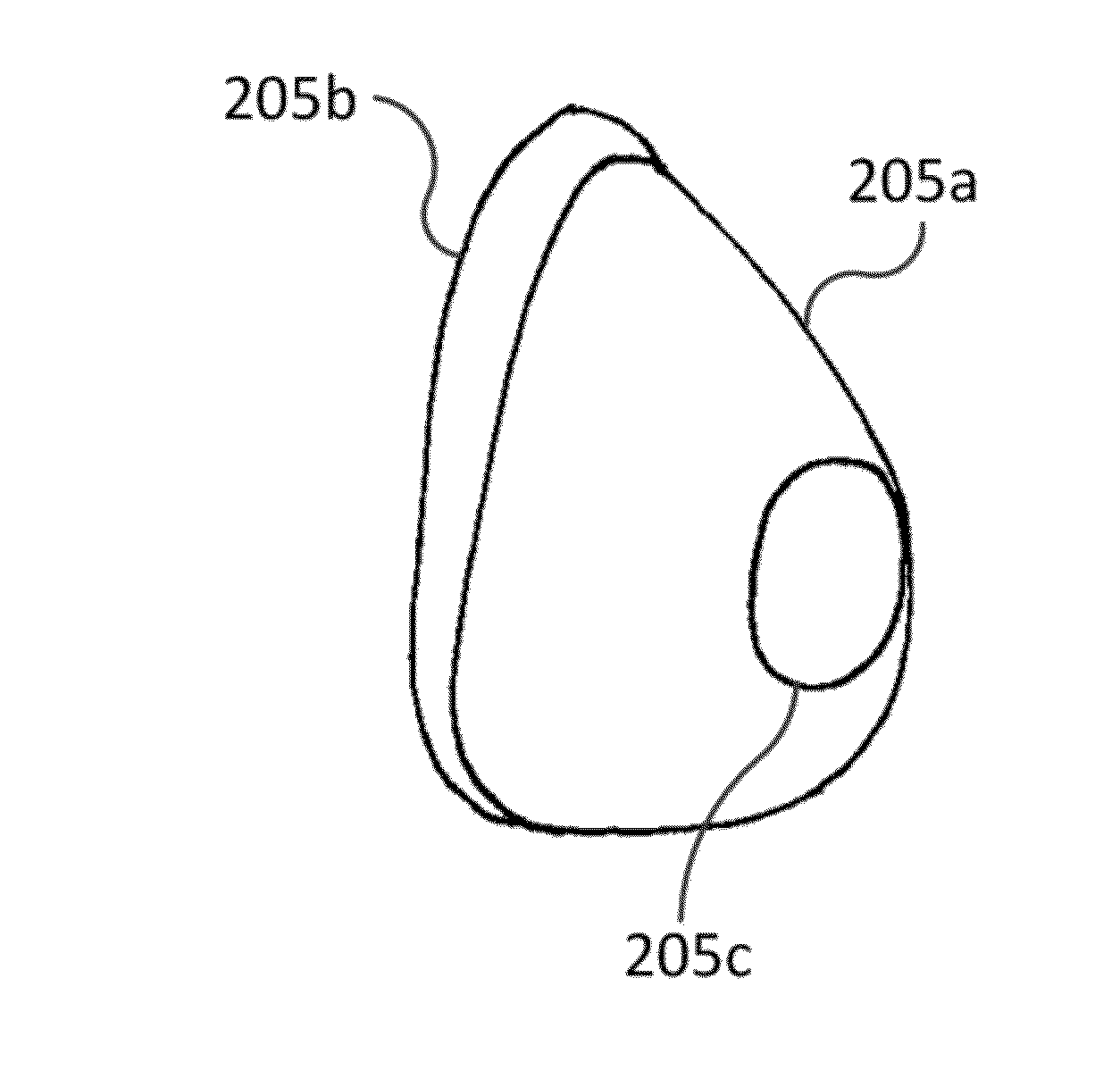Customized Breathing Mask
a breathing mask and custom technology, applied in the field of custom breathing masks, can solve the problems of low fit factor of the mask, discomfort, pain or leakage of air, mask may not stay in place, etc., and achieve the effects of hygienic use, improved fit factor and cost saving
- Summary
- Abstract
- Description
- Claims
- Application Information
AI Technical Summary
Benefits of technology
Problems solved by technology
Method used
Image
Examples
first embodiment
[0044]In the invention, the capturing of one or more images comprises capturing of one or more images of at least a portion the face which is in a substantially horizontal upward facing position. By capturing the face while the subject is lying on his back, the face may assume a position which is favourable when the subject lies asleep. The face will deform such that soft facial tissue will be indented because of gravity. By consequence the shape of the mask will have an improved fit factor, especially in the situation wherein the subject is asleep, lying on his back. If the subject is upright however, the shape of the mask will be such that the contour of the edge will provide an extra force on the softer parts of the face. This will increase the fit factor even more, because of an improved distribution of force along the edge.
second embodiment
[0045]In a second embodiment, an additional step is performed before capturing of one or more images, the additional step comprising applying an indentation force on at least a portion of the face. Instead of or in addition to capturing the face in a horizontal position, the face may be deliberately and targeted impressed by a mechanical force. The indentation force may be provided in the simplest form by pushing fingers into the softer parts of the face, or by applying a spring load to specific parts of the face. Also a transparent object may be used to apply the force. In the computer processing of the captured images, it is possible to erase the devices or hand which has applied the indentation force if necessary. The advantage of having a captured indented face is that the mask can be printed such that it will exert more force on the softer parts of a relaxed face. In turn this will lead to a more even distribution of force of the mask on the face. Especially the less resilient ...
third embodiment
[0046]In a third embodiment, capturing of one or more images of the face of the subject comprises using an image capturing technique of the group comprising:
[0047]Photometric scanning, such as system using a single camera taking multiple images;[0048]laser scanning;[0049]stereo photography;[0050]tactile imaging.
[0051]These capturing techniques provide images which are accurate, quick and easy to make, and with minimum discomfort for a subject. By using these techniques, no plaster is needed anymore. Plaster is considered very uncomfortable, because of coverage of parts of the face and the relatively long duration of this multi-stage procedure. The images captured with these techniques are easy to use in computer aided manufacturing processes and in particular in rapid prototyping processes. Especially photometric scanning is effective because it requires no laser emitted at the subject, or touching of the subject. By moving the video camera around the subject, an accurate 3D image c...
PUM
| Property | Measurement | Unit |
|---|---|---|
| three-dimensional structure | aaaaa | aaaaa |
| resilient | aaaaa | aaaaa |
| indentation force | aaaaa | aaaaa |
Abstract
Description
Claims
Application Information
 Login to View More
Login to View More - R&D
- Intellectual Property
- Life Sciences
- Materials
- Tech Scout
- Unparalleled Data Quality
- Higher Quality Content
- 60% Fewer Hallucinations
Browse by: Latest US Patents, China's latest patents, Technical Efficacy Thesaurus, Application Domain, Technology Topic, Popular Technical Reports.
© 2025 PatSnap. All rights reserved.Legal|Privacy policy|Modern Slavery Act Transparency Statement|Sitemap|About US| Contact US: help@patsnap.com



